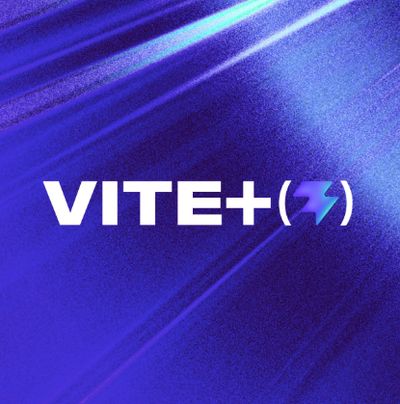Dishka (stands for "cute DI" in Russian)







Cute DI framework with scopes and agreeable API.
📚 Documentation
Purpose
This library provides IoC container that's genuinely useful.
If you're exhausted from endlessly passing objects just to create other objects, only to have those objects create even
more — you're not alone, and we have a solution.
Not every project requires IoC container, but take a look at what we offer.
Unlike other tools, Dishka focuses only
on dependency injection without trying to solve unrelated
tasks.
It keeps DI in place without cluttering your code with global variables and scattered specifiers.
To see how Dishka stands out among other dependency injection tools, check out
the detailed comparison.
Key features:
- Scopes. Any object can have a lifespan for the entire app, a single request, or even more fractionally. Many
frameworks either lack scopes completely or offer only two. Here, you can define as many scopes as needed.
- Finalization. Some dependencies, like database connections, need not only to be created but also carefully
released. Many frameworks lack this essential feature.
- Modular providers. Instead of creating many separate functions or one large class, you can split factories
into smaller classes for easier reuse.
- Clean dependencies. You don't need to add custom markers to dependency code just to make it visible to the
library.
- Simple API. Only a few objects are needed to start using the library.
- Framework integrations. Popular frameworks are supported out of the box. You can simply extend it for your needs.
- Speed. The library is fast enough that performance is not a concern. In fact, it outperforms many
alternatives.
See more in technical requirements.
Quickstart
pip install dishka
- Define your classes with type hints. Imagine you have two classes:
Service (business logic) and
DAO (data access), along with an external API client:
class DAO(Protocol):
...
class Service:
def __init__(self, dao: DAO):
...
class DAOImpl(DAO):
def __init__(self, connection: Connection):
...
class SomeClient:
...
- Create
Provider instance and specify how to provide dependencies.
Providers are used only to set up factories providing your objects.
Use scope=Scope.APP for dependencies created once for the entire application lifetime,
and scope=Scope.REQUEST for those that need to be recreated for each request, event, etc.
To learn more about scopes, see documentation.
from dishka import Provider, Scope
service_provider = Provider(scope=Scope.REQUEST)
service_provider.provide(Service)
service_provider.provide(DAOImpl, provides=DAO)
service_provider.provide(SomeClient, scope=Scope.APP)
To provide a connection, you might need some custom code:
from dishka import Provider, provide, Scope
class ConnectionProvider(Provider):
@provide(scope=Scope.REQUEST)
def new_connection(self) -> Iterable[Connection]:
conn = sqlite3.connect(":memory:")
yield conn
conn.close()
- Create main
Container instance, passing providers, and enter APP scope.
from dishka import make_container
container = make_container(service_provider, ConnectionProvider())
- Access dependencies using container. Container holds a cache of dependencies and is used to retrieve them.
You can use
.get method to access APP-scoped dependencies:
client = container.get(SomeClient)
client = container.get(SomeClient)
- Enter and exit
REQUEST scope repeatedly using a context manager:
with container() as request_container:
service = request_container.get(Service)
service = request_container.get(Service)
with container() as request_container:
service = request_container.get(Service)
- Close container when done:
container.close()
import sqlite3
from collections.abc import Iterable
from sqlite3 import Connection
from typing import Protocol
from dishka import Provider, Scope, make_container, provide
class DAO(Protocol): ...
class Service:
def __init__(self, dao: DAO): ...
class DAOImpl(DAO):
def __init__(self, connection: Connection): ...
class SomeClient: ...
service_provider = Provider(scope=Scope.REQUEST)
service_provider.provide(Service)
service_provider.provide(DAOImpl, provides=DAO)
service_provider.provide(
SomeClient,
scope=Scope.APP,
)
class ConnectionProvider(Provider):
@provide(scope=Scope.REQUEST)
def new_connection(self) -> Iterable[Connection]:
conn = sqlite3.connect(":memory:")
yield conn
conn.close()
container = make_container(service_provider, ConnectionProvider())
client = container.get(
SomeClient,
)
client = container.get(SomeClient)
with container() as request_container:
service = request_container.get(Service)
service = request_container.get(Service)
with container() as request_container:
service = request_container.get(Service)
container.close()
- Integrate with your framework. If you are using a supported framework, add decorators and middleware for it.
For more details, see integrations doc.
from dishka.integrations.fastapi import (
FromDishka, inject, setup_dishka,
)
@router.get("/")
@inject
async def index(service: FromDishka[Service]) -> str:
...
...
setup_dishka(container, app)
Concepts
Dependency is what you need for some parts of your code to work.
Dependencies are simply objects you don't create directly in place and might want to replace someday, at least for
testing purposes.
Some of them live for the entire application lifetime, while others are created and destroyed with each request.
Dependencies can also rely on other objects, which then become their dependencies.
Scope is the lifespan of a dependency. Standard scopes are (with some skipped):
APP -> REQUEST -> ACTION -> STEP.
You decide when to enter and exit each scope, but this is done one by one.
You set a scope for each dependency when you configure how it is created.
If the same dependency is requested multiple times within a single scope without leaving it, then by default the same
instance is returned.
For a web application, enter APP scope on startup and REQUEST scope for each HTTP request.
You can create a custom scope by defining your own Scope class if the standard scope flow doesn't fit your needs.
Container is what you use to get your dependencies.
You simply call .get(SomeType) and it finds a way to provide you with an instance of that type.
Container itself doesn't create objects but manages their lifecycle and caches.
It delegates object creation to providers that are passed during creation.
Provider is a collection of functions that provide concrete objects.
Provider is a class with attributes and methods, each being the result of provide, alias, from_context, or
decorate.
They can be used as provider methods, functions to assign attributes, or method decorators.
@provide can be used as a decorator for a method.
This method will be called when the corresponding dependency has to be created.
Name doesn't matter: just make sure it's different from other Provider attributes.
Type hints do matter: they indicate what this method creates and what it requires.
All method parameters are treated as dependencies and are created using the container.
If provide is applied to a class, that class itself is treated as a factory (its __init__ parameters are analyzed).
Remember to assign this call to an attribute; otherwise, it will be ignored.
Component is an isolated group of providers within the same container, identified by a unique string.
When a dependency is requested, it is only searched within the same component as its direct dependant, unless explicitly
specified otherwise.
This structure allows you to build different parts of the application separately without worrying about using the same
types.








